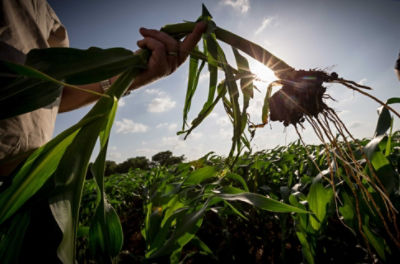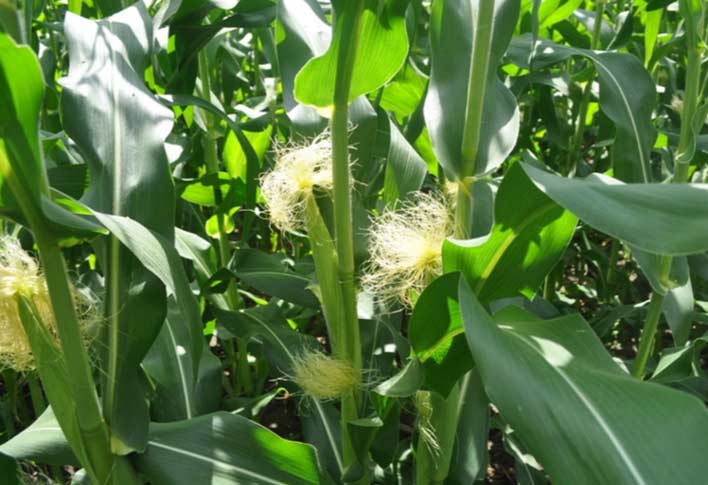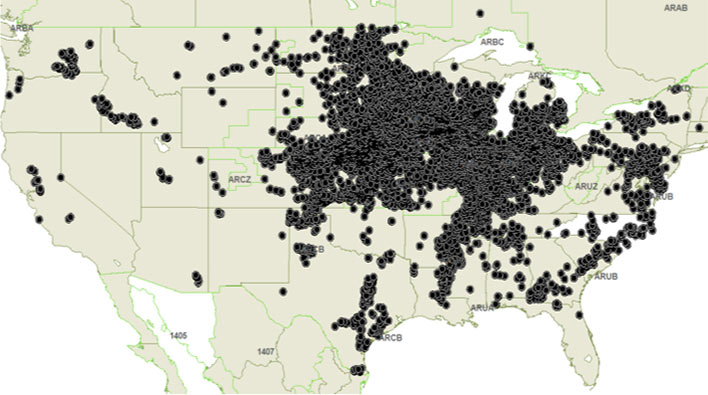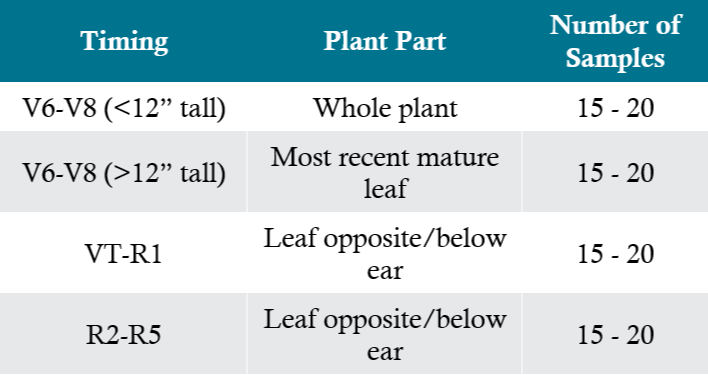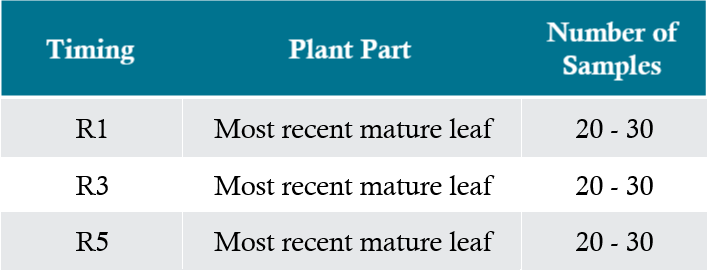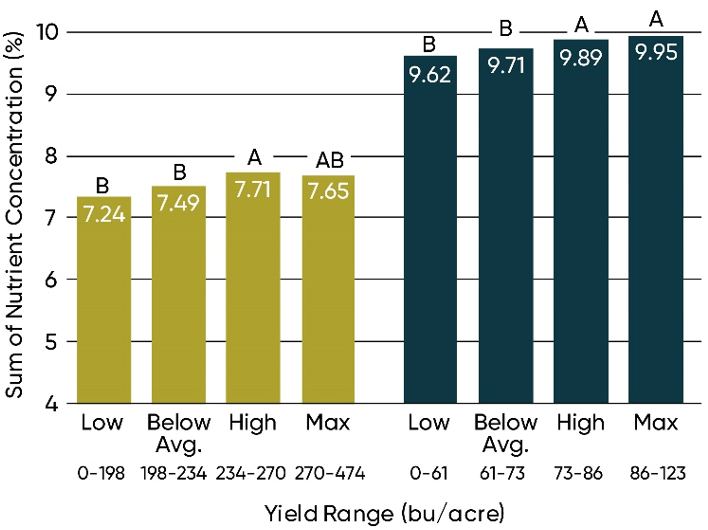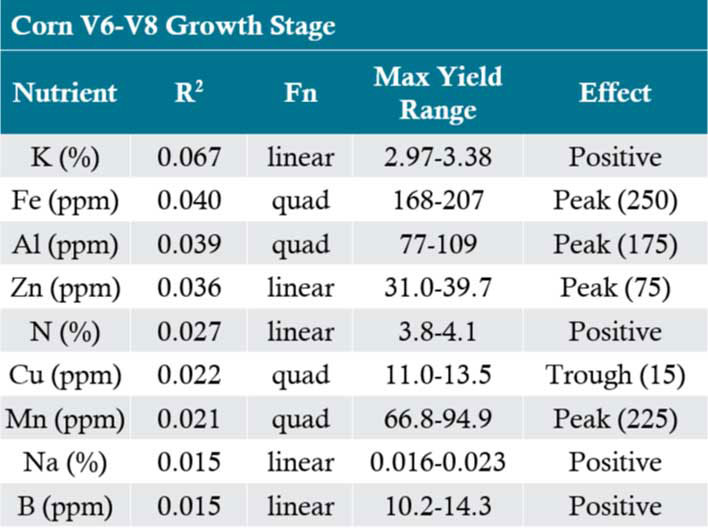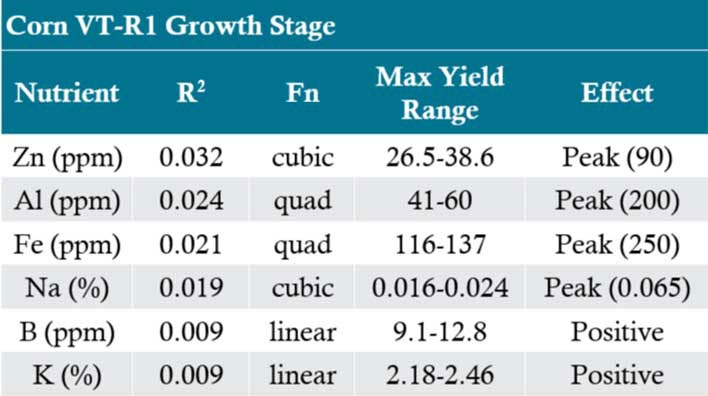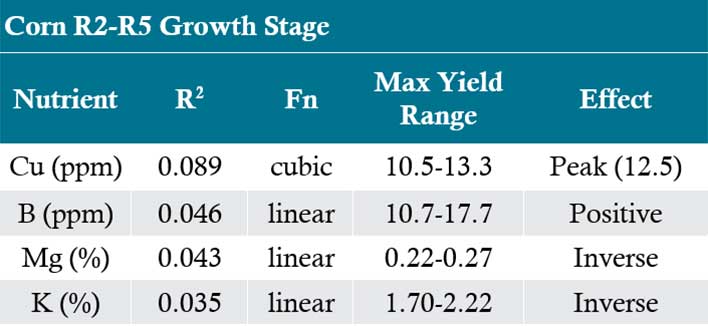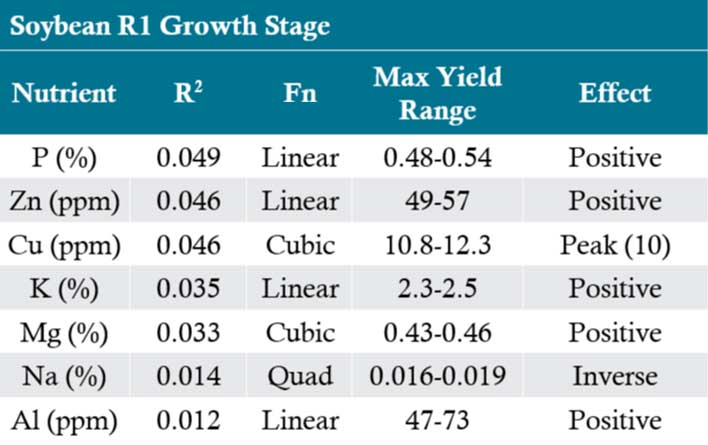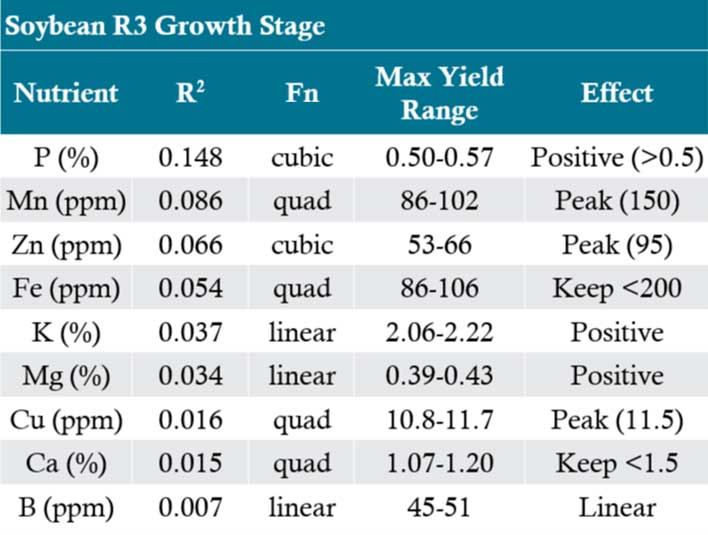Nutrient sufficiency ranges generated based on samples taken at maximum yield locations (>270 bu/acre in corn and >86 bu/acre in soybeans) were slightly or substantially higher than previously published ranges in many cases.
Sufficiency ranges for N and K during vegetative stages in corn were substantially higher than previously published ranges (Table 5). Numerous other nutrients had ranges that were slightly higher or narrower than published ranges at one or more growth stages. Sufficiency ranges for many nutrients were identified to be at the lower end of the published ranges. In six of the nutrient x growth stage combinations, luxury feeding is likely occurring. In four of the nutrient x growth stage combinations, the published range for the nutrient could be deleterious to yield.
Table 5. Nutrient tissue sufficiency ranges for maximum yield corn at critical growth stages. Colors indicate differences from previously published nutrient sufficiency ranges.
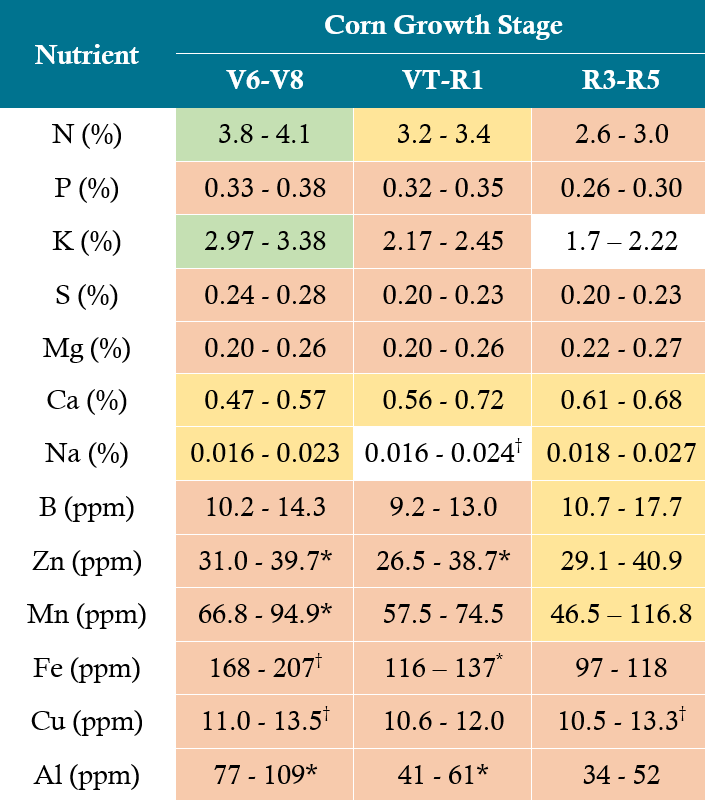

* Data indicate a peak in yield relative to nutrient level, suggestive of luxury feeding at high levels. If level is above this range, consult your Pioneer agronomist for specific recommendations.
† Data indicate a decrease in yield relative to nutrient level beyond a certain point, suggestive of possible toxicity at high levels or antagonistic nutrient interaction. If level is above this range, consult your Pioneer agronomist for specific recommendations.
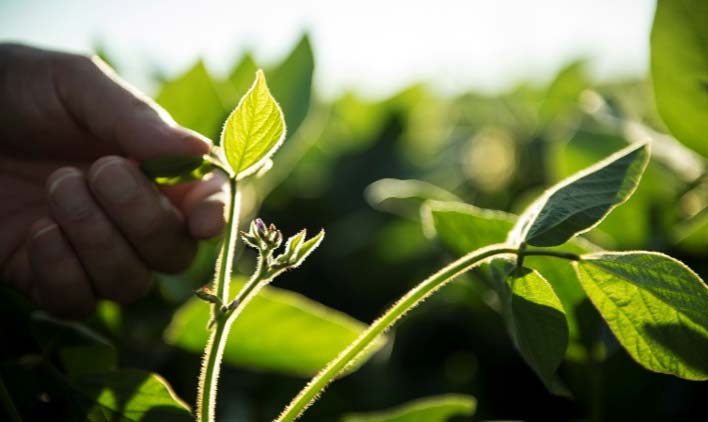
In soybean, N sufficiency ranges were higher than published ranges at two of the three critical growth stages (Table 6). Ranges for P, K, Ca, Zn, and Mn were also greater than published ranges at one or more growth stages. Yet again, many nutrient sufficiency ranges were found to be at the lower end of published ranges. Fourteen combinations of nutrient x growth stage existed where yield would suffer from published ranges in this data set; three cases of luxury feeding existed.
Table 6. Nutrient tissue sufficiency ranges for maximum yield soybeans at critical growth stages. Colors indicate differences from previously published nutrient sufficiency ranges.
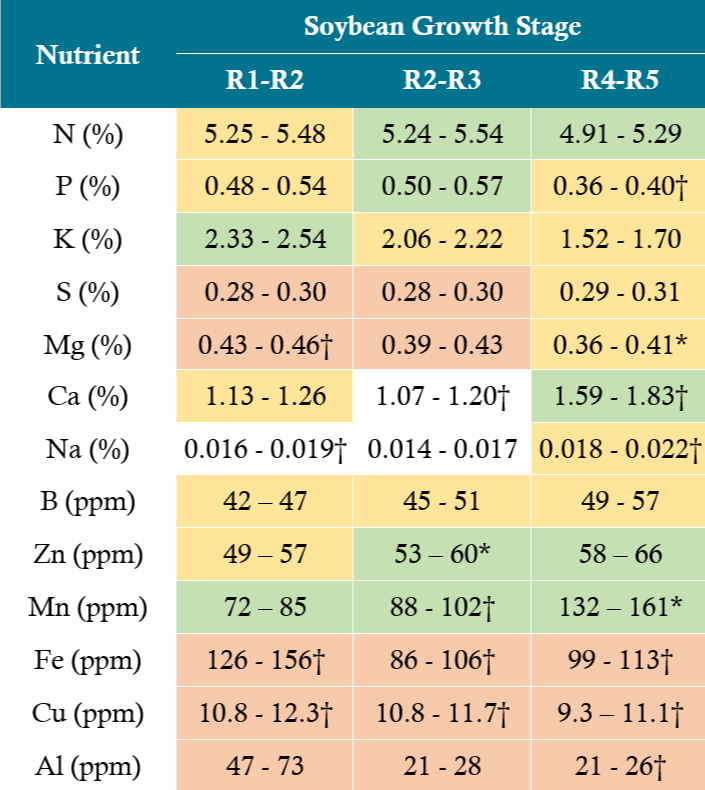
 |
Range narrows in low end of published ranges. |
 |
Range narrows in high end of published ranges. |
 |
Range extends beyond published nutrient sufficiency ranges |

* Data indicate a peak in yield relative to nutrient level, suggestive of luxury feeding at high levels. If level is above this range, consult your Pioneer agronomist for specific recommendations.
† Data indicate a decrease in yield relative to nutrient level beyond a certain point, suggestive of possible toxicity at high levels or antagonistic nutrient interaction. If level is above this range, consult your Pioneer agronomist for specific recommendations.
These ranges should be used to carefully monitor a cropping system. Table 3 and Table 4 provide insight as to the most important nutrients within this high yield data set; Table 5 and Table 6 provide ranges and relationships. In some instances, a clear direction to address a need may not be evident. For example, Cu levels may be higher than you would like based on this dataset. Investigation will find that Cu can compete with Mn for uptake. A management change to combat the higher Cu level may be proper placement of Mn. A thorough understanding of nutrient uptake and interactions will likely be key to finding the most economical, convenient, and reliable amelioration efforts.
